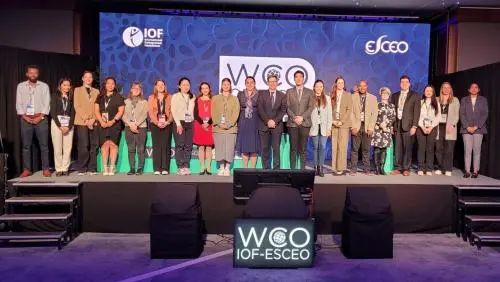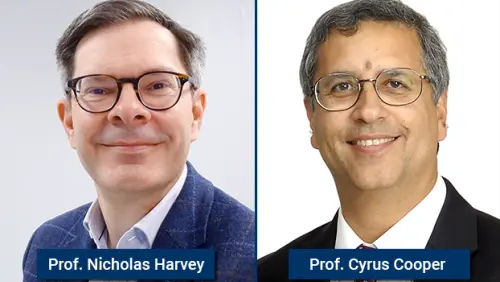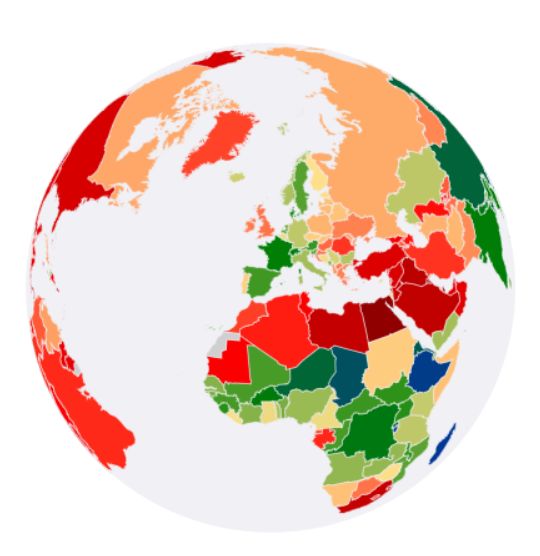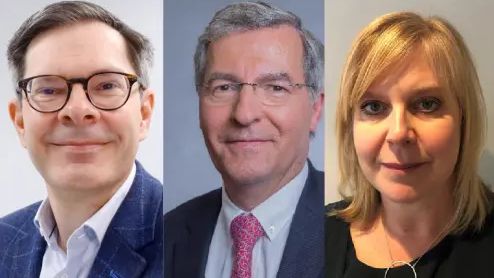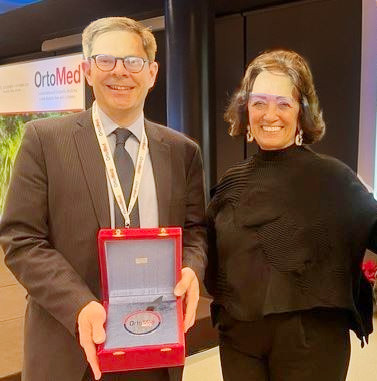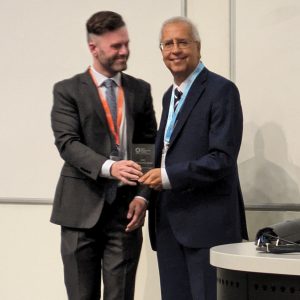[vc_row top_margin=”none”][vc_column top_margin=”none” width=”1/1″][vc_single_image image=”4141″ alignment=”center” style=”vc_box_shadow_3d” border_color=”grey” img_link_large=”” img_link_target=”_self” img_size=”full”][vc_column_text]
Leading Southampton health researchers are playing a key role in an ambitious national project launched today to scan the bones, hearts and brains of 100,000 middle-aged people.
[/vc_column_text][vc_column_text]
Bone expert, Nicholas Harvey, Professor of Rheumatology and Clinical Epidemiology at the Medical Research Council (MRC) Lifecourse Epidemiology Unit, University of Southampton, leads the musculoskeletal component of the pioneering UK Biobank imaging project.
[/vc_column_text][vc_column_text]
The £40 million study will provide new perspectives on the best way to prevent and treat multi-faceted conditions that tend to strike in mid to later life, such as arthritis, coronary heart disease, cancer, Alzheimer’s and osteoporosis.
[/vc_column_text][vc_column_text]
UK Biobank has already recruited 500,000 volunteer participants to create a world-leading health research resource, which includes information about participants’ health and well-being, their genetic data and links to medical records. It now proposes to scan one in five of them, to create the biggest scanning study ever undertaken, ten times larger than any previous study. The combined information will help scientists understand why some people get particular diseases and others do not.
[/vc_column_text][vc_column_text]
Expert input from Professor Harvey, and Professor Cyrus Cooper, Director of the MRC Lifecourse Epidemiology Unit at the University of Southampton, and who co-authored the musculoskeletal component of the study, has been crucial in establishing the huge project, which is funded by the Medical Research Council (MRC), Wellcome Trust and the British Heart Foundation (BHF).
[/vc_column_text][vc_column_text]
Imaging experts of the brain, heart, abdominal fat and carotid artery have also been involved in developing the study, which has recently successfully concluded the initial phase.
[/vc_column_text][vc_single_image image=”4142″ border_color=”grey” img_link_large=”” img_link_target=”_self” img_size=”medium” alignment=”center” style=”vc_box_shadow_3d”][vc_column_text]
Professor Harvey hopes that the study will help to prevent the huge burden of broken bones resulting from osteoporosis (thinning of the bones), a significant public health issue which costs the UK economy more than £3 billion a year.
[/vc_column_text][vc_column_text]
Professor Harvey’s research forms part of a larger programme of work at the MRC Lifecourse Epidemiology Unit, directed by Professor Cyrus Cooper at the University of Southampton, and focuses on investigating, across the whole lifecourse from cradle to grave, risk factors for osteoporotic fracture. The group brings together observational evidence from cohorts such as the Southampton Women’s Survey, with mechanistic understanding, for example of epigenetic processes, derived through collaboration with colleagues at the University’s Institute of Developmental Sciences, to inform potential novel interventions to improve bone development and reduce the risk of osteoporotic fracture. The group’s work has informed policy nationally and internationally, and most recently this strategy has successfully demonstrated the value of vitamin D supplementation in pregnancy to improve offspring bone mass.
[/vc_column_text][vc_column_text]
“One in two women and one in five men over 50 years will suffer a broken bone due to osteoporosis, and this has major consequences for their quality of life,” said Professor Harvey. “It is critically important that we develop new ways to prevent and treat this devastating condition, and the UK Biobank imaging study will provide much needed opportunities for crucial future research.”
[/vc_column_text][vc_column_text]
Professor Harvey added, “The really exciting thing about these imaging data is that we will have the opportunity to study bone mass and determinants of osteoporosis in relation to other common chronic diseases such as diabetes, atherosclerosis, hypertension, dementia, and sarcopenia (muscle loss). This is a unique research opportunity and promises to deliver ground breaking scientific information, which ultimately should improve our lives.”
[/vc_column_text][vc_column_text]
Professor Cooper commented, “This successful bid for the UK Biobank Imaging enhancement illustrates the importance for the University of Southampton and MRC Lifecourse Epidemiology Unit in our ongoing contribution to the leadership of this large, state of the art, multimodality investigation as part of the internationally leading UK Biobank study. The intensive musculoskeletal characterization will permit novel linkage to imaging of other systems and to the extensive existing phenotypic information, which should yield internationally important opportunities for discovery science.”
[/vc_column_text][vc_single_image image=”4143″ alignment=”center” style=”vc_box_shadow_3d” border_color=”grey” img_link_large=”” img_link_target=”_self” img_size=”full”][vc_column_text]
UK Biobank participants were recruited across the UK. Imaging assessment centres will be located in Reading, Manchester and Newcastle upon Tyne. The research resource is open to all bona fide health scientists in the UK and overseas and was developed as a major contribution to improving the health of future generations.
[/vc_column_text][vc_column_text]www.ukbiobank.ac.uk
More information from University of Southampton Press Office:??
Or Andrew Trehearne on 01865 743960/ 07979 940972
Andrew.trehearne@ukbiobank.ac.uk[/vc_column_text][/vc_column][/vc_row]

